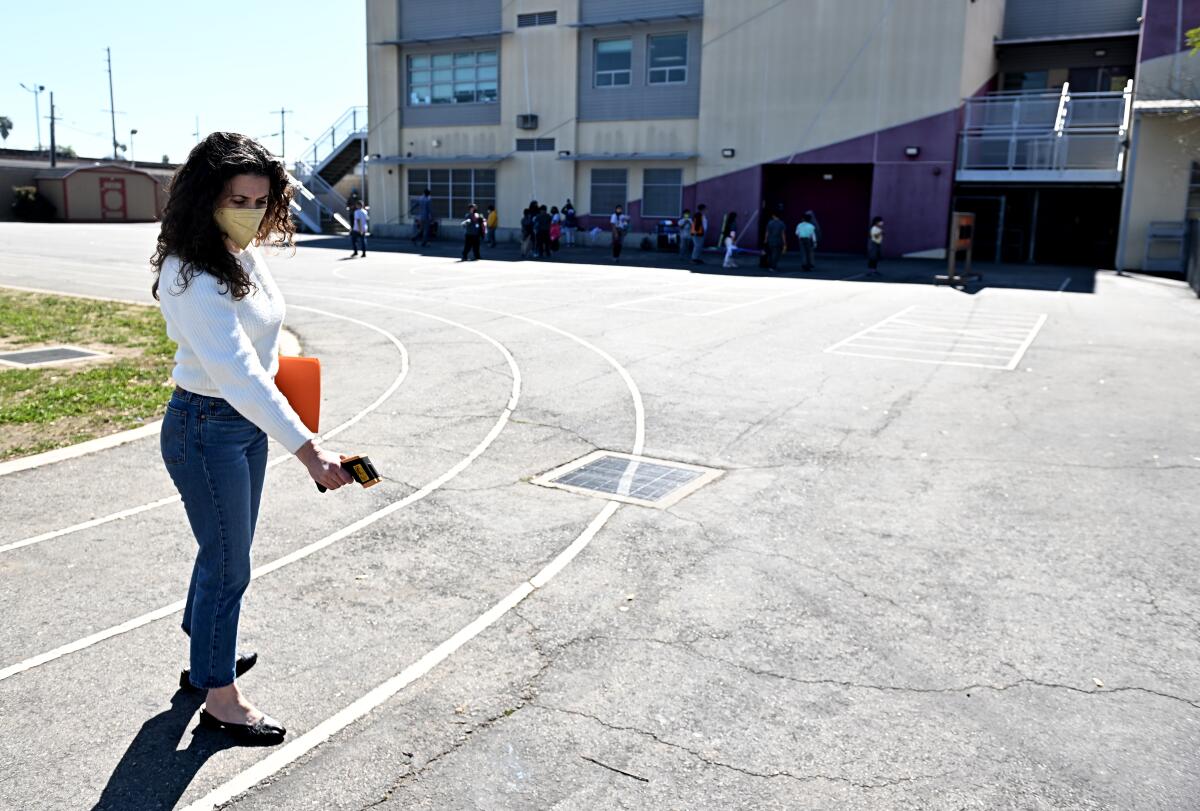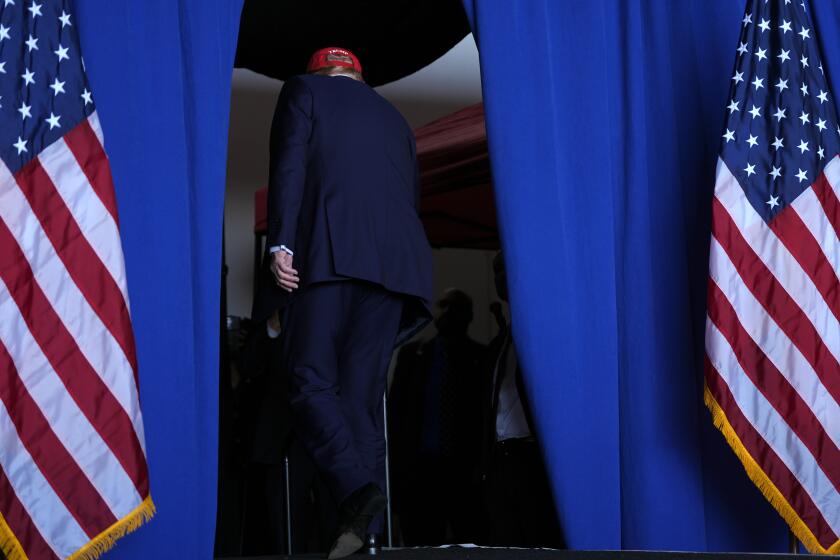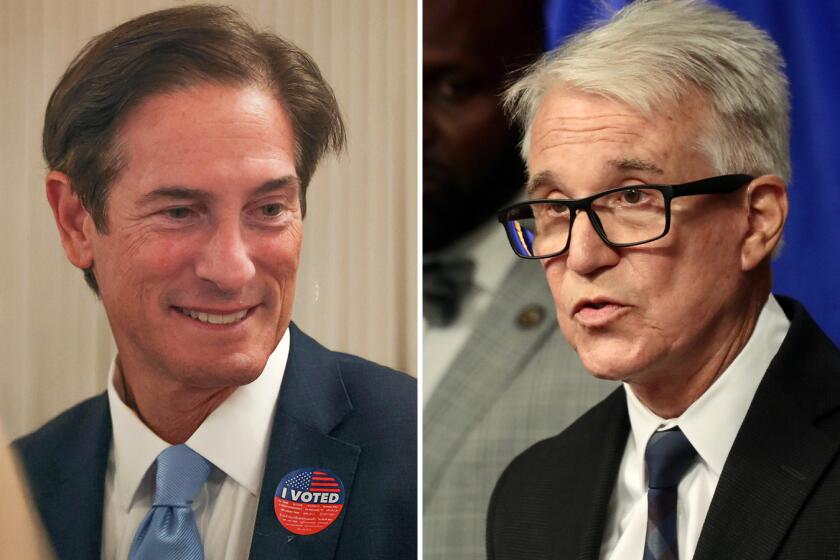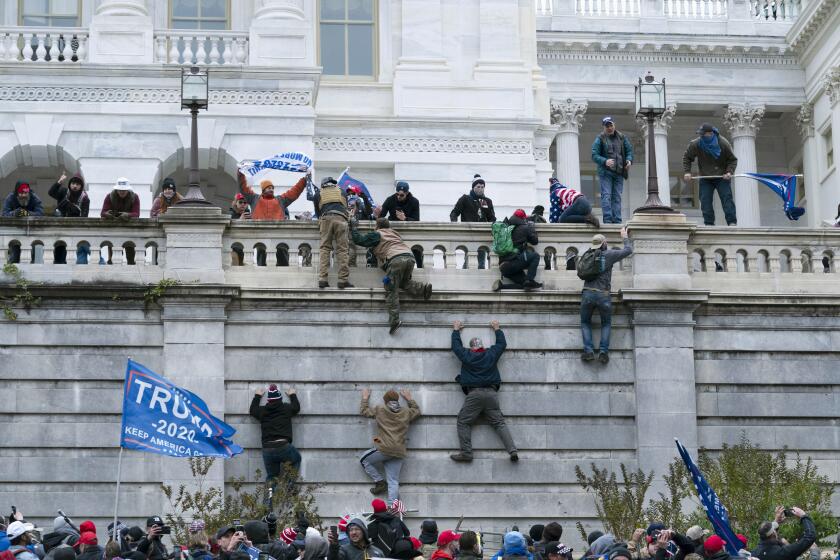Endorsement: Yes on Measure US. LAUSD students need safe and welcoming schools

There is a lot of construction to be done on Los Angeles-area schools. In an ever-hotter climate, all campuses need functioning air conditioning and outdoor shade structures. Some of the blacktop that serves as play space should be replaced by green areas and trees.
Older schools must be brought to seismic safety standards. Aging roofs and plumbing need replacing. More than 60% of the school buildings are more than 50 years old, and too many look like dingy prisons and need to be modernized. And there’s no getting around the major post-pandemic increases in construction costs that have kept the Los Angeles Unified School District from doing all it had planned with its existing bond money.
Measure US on the Nov. 5 ballot is a $9-billion bond measure designed to help LAUSD address the backlog of construction projects and the inevitable maintenance needs that will arise in the coming years. Despite some reservations, The Times recommends a Yes vote because students need safe and welcoming schools.
From the top of the ticket to local ballot measures, California voters this year are grappling with major decisions that will shape their lives and communities for years to come.
The size of the bond measure does raise eyebrows. At $9 billion, Measure US is bigger than the $8.5 billion that Proposition 2, the state bond measure, seeks for K-12 schools. (The total state bond request is $10 billion, but $1.5 billion of that would go to community colleges.)
Does the district really need that much? It would add about $110 a year to the average homeowner’s property tax bill within the district, on top of the $570 per year that taxpayers already are footing for L.A. Unified bonds.
The school board voted to put Measure US on the ballot with very little public outreach — so little that the head of the district’s bond oversight committee said he couldn’t comment on it because he hadn’t had a chance to vet it. Supt. Alberto Carvalho’s explanation that the district had to wait until the state ironed out its own bond measure doesn’t wash. The district has the money to apply for matching funds in any case, and the portion it can expect from the state — which now stands at around $700 million — wouldn’t change enough to appreciably affect the total bond amount.
Two years after Los Angeles City Hall scandal, voters have the chance to enact key reforms to discourage corruption and increase independent ethics oversight.
Beyond that, as school board candidate and bond critic Dan Chang has said, the district hasn’t done enough homework to figure out what it needs. Enrollment has dropped from a peak of nearly 750,000 in 2003-04 to 403,000 this year. The district has projected that it will have around 300,000 students by 2031.
No one likes to talk about closing schools, which is devastating to families and communities, but it is hard to imagine how the district can keep all of its current schools open. Shouldn’t the determination about which schools to close occur before developing the bond measure spending plan? Is it worthwhile to renovate decrepit buildings rather than shutter them?
Carvalho says the district can still save money by partially closing campuses. At Crenshaw High, where enrollment fell below 500 at the beginning of this school year, he foresees shutting some buildings and leaving enough open to conduct classes. But that still might mean greening and updating the grounds of a campus for a drastically reduced student population — which might then prevent closing the campus even if that makes sense, because the district will already have invested in improvements.
Voters should pick the four incumbents. They haven’t done a perfect job, but they are on top of the issues and speak intelligently about where the board has succeeded and what it still needs to do.
The school district has an obligation to use taxpayer money efficiently, but at the same time, taxpayers have an obligation to the students. Kids need clean, safe schools. A dilapidated school is a depressing place. No one wants to be there, much less teach or learn there. It sends a message: Despite what we tell you, education isn’t all that important.
Perhaps this bond measure is bigger than it needs to be. But there are many very real renovation needs, and on balance, making sure that students will have modern schools in good repair matters more than whether the bond is just the right size. If the money is spent wisely, it will simply last longer. The need to maintain and update schools is not going to go away.
The district, however, still is responsible for showing that the money will be well spent. That means coming up with a comprehensive plan for downsizing and closing underutilized schools, a plan that the public can study and comment on at length.
More to Read
A cure for the common opinion
Get thought-provoking perspectives with our weekly newsletter.
You may occasionally receive promotional content from the Los Angeles Times.













